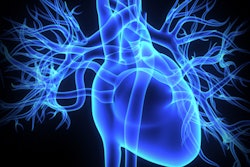Women in Denmark and Sweden who received radiotherapy treatments for breast cancer over a 30-year period ending in 2006 had a higher risk of developing ischemic heart disease, pericarditis, and valvular disease compared with those who did not.
Findings from a study of the heart disease incidence of more than 72,100 female breast cancer patients were published on 11 July in an article in Radiotherapy and Oncology. The objective of the study was to calculate the incidence of radiation-related heart disease in a population of breast cancer patients followed for up to 30 years. Person-years at risk began one month after breast cancer diagnosis, and continued until heart disease diagnosis, loss to follow-up, 90th birthday, or death.
A multi-institutional research team identified that 34,825 breast cancer patients received radiotherapy treatment. The women were evenly divided as having left- or right-sided breast cancer. Although the amount of radiation dose varied somewhat between 1976 and 2006, and also between countries, the mean dose to the whole heart for both countries and all time periods was 6.3 Gy for left-sided tumors and 2.7 Gy for right-sided tumors. Mean dose to the left anterior descending coronary artery was higher than the mean dose to the whole heart throughout at 18.8 Gy. For right-sided tumors, the dose was 1.5 Gy.
Women who had left-sided tumors had more heart disease, mainly due to increases in ischemic heart disease (1.18 incidence ratio), pericarditis (1.61 incidence ratio), and valvular heart disease (1.54 incidence ratio). The increase in ischemic heart disease was due to acute pericarditis. Valvular heart disease was due to aortic valve disease, according to lead author Dr. Paul McGale of the University of Oxford's Clinical Trial Service Unit and colleagues.
Patients who underwent radiotherapy had the greatest risk of developing myocardial infarction 15 or more years after irradiation. Pericarditis and valvular heart disease risk was greatest five to nine years following treatment. Angina tended to develop in the first four years following treatment.
Women who had been diagnosed with heart disease prior to breast cancer treatment had the highest risk. What may be the most important clinical finding of the study was that among this subgroup of women, those with left-sided cancers had almost five times greater risk of additional heart conditions. The researchers stated that if this finding was confirmed in other studies, special efforts should be made when planning radiotherapy treatments to limit cardiac radiation exposure for these patients.
Interestingly, mortality from all heart disease and all ischemic heart disease was identical in left- and right-sided breast cancer patients. The authors suggested that might have been different if the study had been extended to cover a longer span of time.



















